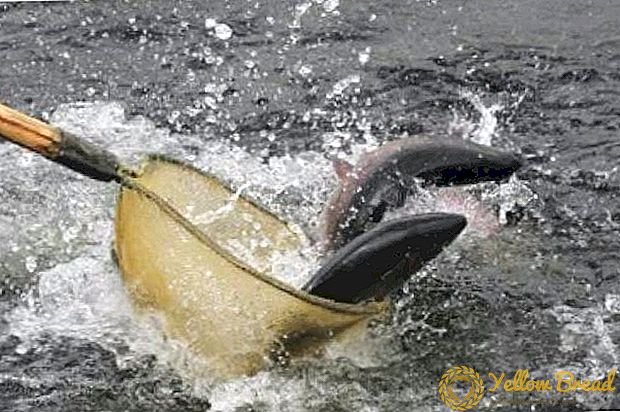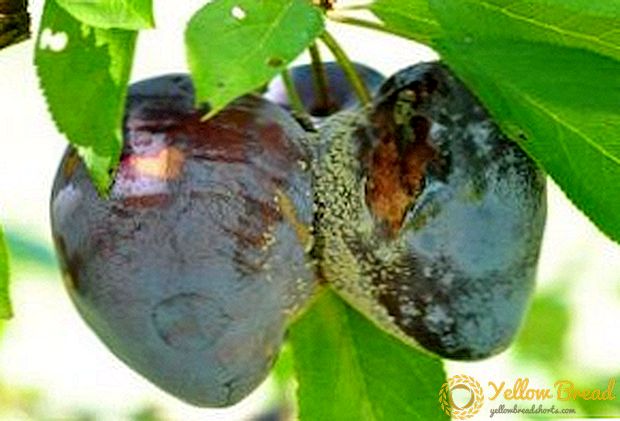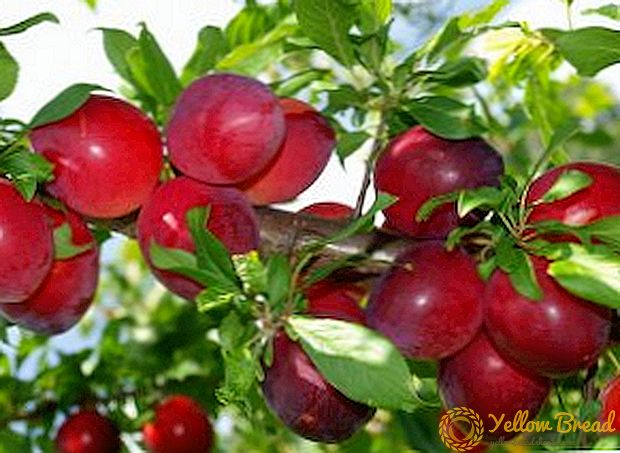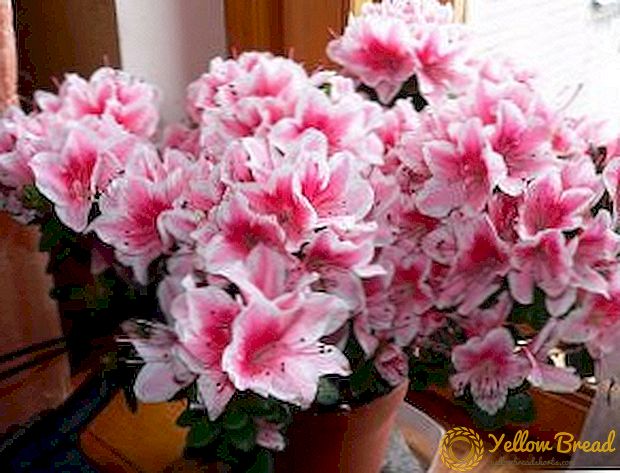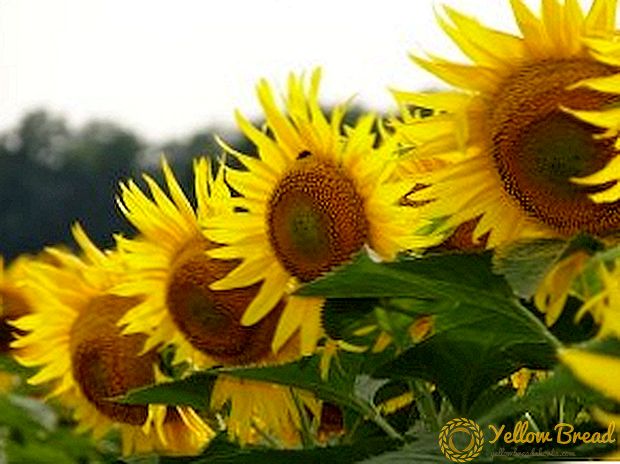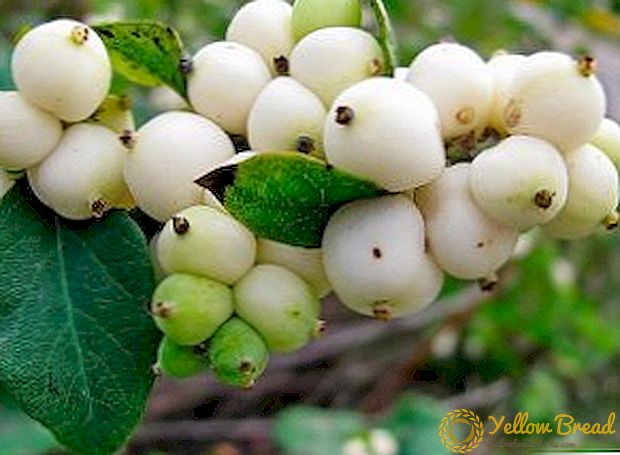 On the street, in the park or in the yard, you can sometimes see low bushes with white berries in the form of balls. This unusual plant is called snowberry (Symphoricarpus, Snowfield). It can be a wonderful decorative element in the landscape, and caring for it does not require much difficulty.
On the street, in the park or in the yard, you can sometimes see low bushes with white berries in the form of balls. This unusual plant is called snowberry (Symphoricarpus, Snowfield). It can be a wonderful decorative element in the landscape, and caring for it does not require much difficulty.
- Choosing a site for planting snowberry
- Step-by-step planting snow bug
- How to water the bushes
- How to prune
- Methods of breeding snowfield
- Root shoots
- Dividing bush
- Layering
- Cuttings
- Seeds
- How to deal with possible pests and diseases of the snowberry
- Snowdrop in garden design
- Healing properties of the snowberry
Choosing a site for planting snowberry
For the conditions and the place of landing the snowberry has no special requirements. It can grow in the shade and in sunny places, tolerates drought, and is resistant to urban environments - smoke and gases. The rhizomes of the snowfield can stop the destruction of the crumbling slope. They adapt to the placement of the root system of large trees, which allows the shrub to grow directly beneath them.
 The only adverse factor for the plant is excessive soil moisture.therefore, when choosing a landing site, you need to pay attention to well-drained zones.
The only adverse factor for the plant is excessive soil moisture.therefore, when choosing a landing site, you need to pay attention to well-drained zones.
Step-by-step planting snow bug
Material for planting must be dug with a lump of earth on the roots. It is recommended to choose young bushes that are 2-4 years old. In the case of transportation, the roots are wrapped in thick paper or damp cloth to prevent damage and shrinkage. If the roots are dry, it is necessary to cover them with a liquid mixture of clay and water before planting.
For a single planting of a snowfield, a hole should be dug with a depth and diameter of 0.6-0.7 m. For group planting, the shrub should be placed at a distance of 1-1.5 m from other plants, and the depth of the landing hole should reach 0.5-0.7 m
To plant an even hedge it is necessary to tighten the cord and dig a trench along this line with a depth of 0.6-0.7 m and a width of 0.4-0.5 m.
 Further it is necessary to fertilize the soil, if there is a need. A mixture of peat, sand and humus (compost) is added to the clay soil, and wood ash and superphosphate can also be used (600 g and 200 g, respectively, for each bush). Between the bushes need to leave a distance of 0.3-0.5 m.After planting, the soil is tamped down and covered with the same fertile mixture. The first 4-5 days sapling need to be watered daily.
Further it is necessary to fertilize the soil, if there is a need. A mixture of peat, sand and humus (compost) is added to the clay soil, and wood ash and superphosphate can also be used (600 g and 200 g, respectively, for each bush). Between the bushes need to leave a distance of 0.3-0.5 m.After planting, the soil is tamped down and covered with the same fertile mixture. The first 4-5 days sapling need to be watered daily.
How to water the bushes
Watering the bushes in a dry pore follows from the calculation of about 20 liters of water (2.5 buckets) per square meter. It is recommended to do this in the evening and not too often. If the natural soil moisture is sufficient, additional watering is not needed. After watering or rain it is convenient to weed and loosen the soil around the shrub.
How to prune
Pruning snowfield is best done in early spring, before bud break. It should be borne in mind that flower buds are formed on the shoots of the current year. After pruning the shrub is actively and easily restored.
 When pruning, forming a crown, shoots need to be shortened by about half or one-fourth the length. By sanitary pruning refers to the removal of dry and damaged branches. This pruning should be done regularly.
When pruning, forming a crown, shoots need to be shortened by about half or one-fourth the length. By sanitary pruning refers to the removal of dry and damaged branches. This pruning should be done regularly.
Over time, the snowberry shrub loses its neat appearance: the shoots weaken and shorten, and the leaves and flowers become small. To update the old bush, spend rejuvenating pruning.If the bush is completely cut at a height of 40–60 cm, new strong shoots develop from the sleeping buds over the summer.
After pruning, the cut sections of the branches are processed by the garden pitch.
Methods of breeding snowfield
For breeding snowdrop you can choose the most convenient way for yourself from several existing ones.
Root shoots
The shrub can expand and move from the original landing site, because around it in large numbers of root growth is formed. It is used as a material for planting. This method also helps to protect the bush from overgrowth.
Dividing bush
In early spring or late autumn, a large snowdrop bush can be dug up and divided into several parts. Care must be taken that each part has strong developed roots and branches.
Layering
 For reproduction by layering, a groove should be made near the bush, bend a young branch into it, fix it (for example, with wire) and cover it with soil so that the top of the branch remains on the surface.It is recommended to do this in the spring, and in the summer it is necessary to water the layers, fertilize and loosen the soil around it. Until the fall, it will take root, and it can be transplanted to another place, separating the secateurs from the main plant.
For reproduction by layering, a groove should be made near the bush, bend a young branch into it, fix it (for example, with wire) and cover it with soil so that the top of the branch remains on the surface.It is recommended to do this in the spring, and in the summer it is necessary to water the layers, fertilize and loosen the soil around it. Until the fall, it will take root, and it can be transplanted to another place, separating the secateurs from the main plant.
Cuttings
For propagation by cutting, lignified and green cuttings are used. Snowdrop shoots 10-20 cm long are cut in late autumn or early winter and stored in a cool place, immersed in sand. In the spring cuttings are cut into pieces with several buds. Green shoots are cut at the beginning of summer and placed in warm water for rooting.
The cuttings are planted in a nutrient substrate mixed with sand, and placed in a greenhouse. In autumn, the plants are transplanted to the site, and covered in winter.
Seeds
The long process of seed reproduction of snowfields begins with the extraction of ripe seeds from the fruit, washing and drying. Then they should be sown in boxes with fertile soil, sprinkled with sand a little, cover with glass, prikopat on the site and moistened periodically. If you do this in the fall, then the first shoots will appear in spring, which in May can be swooped down and transplanted into the open ground.
How to deal with possible pests and diseases of the snowberry
The snowberry is resistant to diseases and pests, but with excessive soil moisture it can be affected by gray rot and powdery mildew. To prevent infection in early spring, the bushes are treated with a 3% solution of Bordeaux mixture (10 liters of water, 300 g of copper sulphate, 400 g of freshly sour lime). For powdery mildew, a mixture of a 0.5% solution of soda ash and laundry soap helps.
Shrub pests are a honeysuckle sawfly and a bumblebee-shaped proboscis, which can be controlled with the help of insecticidal preparations (for example, Karbofos). Pest affected branches are pruned and destroyed.
Snowdrop in garden design
The hedgehog is a great alternative to an ordinary fence. It performs a protective function and at the same time looks very aesthetic. For the fence is better to pick up young plants.  The snowberry looks beautiful in a single planting in open space (for example, on a large lawn), and in combination with contrasting plants - tall, dark green or coniferous, with bright fruits (mountain ash, viburnum, hawthorn).It can become part of a mixborder - a flower garden with a complex combination of flowers and shrubs with a different flowering period.
The snowberry looks beautiful in a single planting in open space (for example, on a large lawn), and in combination with contrasting plants - tall, dark green or coniferous, with bright fruits (mountain ash, viburnum, hawthorn).It can become part of a mixborder - a flower garden with a complex combination of flowers and shrubs with a different flowering period.
With the help of densely planted bushes, the garden can be divided into zones, as well as create a natural background for other plants (for example, multi-colored asters).
The most decorative snowfield looks in the fall: shoots with densely located fruits of white or pink color create graceful arc-shaped bends.
Healing properties of the snowberry
It is necessary to use the snowberry for medicinal purposes with caution, because it is poisonous, and its chemical composition and properties are poorly understood.
It is known that the plant contains saponins - substances that form foam, irritating mucous membranes and have anti-ulcer, diuretic, tonic, sedative qualities. They are toxic when consumed excessively and released into the blood.
 For medical and economic purposes, the snowberry was used by some North American Indian tribes.Berries served as a hygienic and healing agent for the skin (from burns, rashes, ulcers). Crushed leaves, fruits and bark as a compress is a remedy for cuts, wounds, burns and cracks in the skin. The infusion of the stems was used to treat diseases of the stomach and menstrual disorders, a decoction of the leaves for cold, a decoction of the roots for venereal diseases.
For medical and economic purposes, the snowberry was used by some North American Indian tribes.Berries served as a hygienic and healing agent for the skin (from burns, rashes, ulcers). Crushed leaves, fruits and bark as a compress is a remedy for cuts, wounds, burns and cracks in the skin. The infusion of the stems was used to treat diseases of the stomach and menstrual disorders, a decoction of the leaves for cold, a decoction of the roots for venereal diseases.

